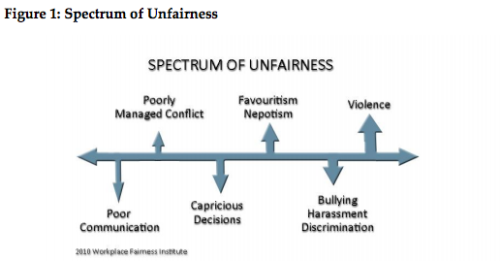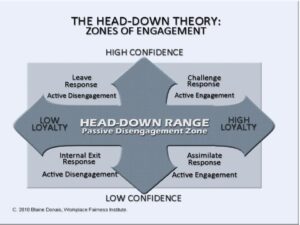I’ve worked with many organizations and groups over the years to determine and resolve challenges…

How Your Organization can Avoid the Great Resignation
Since the pandemic, US employees are leaving the workforce or switching jobs in droves with people referring to this phenomenon as ‘ The Great Resignation’. In July 2021, 4 million Americans quit their job (U.S. Bureau of Labor Statistics). Resignations peaked in April and remained abnormally high for several months, with a record-breaking 10.9 million open jobs at the end of July. While this may not be the same in Canada yet, it may be coming. How can employers retain people in the face of this tidal wave of resignations?
- Engage your Employees:
Let’s start with the definition of an Engaged Employee as “a person who is passionate, committed, loyal, confident, and know they are contributing towards improvement for themselves and their workplace.” I believe all employees come to workplaces with this attitude and display these behaviours until something happens to change this. Then we see different behaviours of those who remove themselves emotionally, who seem to be watching the clock or keeping their “head down”.
When employees come into conflict with the organization or their colleagues, or feel unfairly treated they often lose passion and commitment for the organization itself. They may feel their psychological health and safety are compromised and view the organization as unfair as this image illustrates;
 Blaine Donais is president and founder of the Workplace Fairness Institute. His “Head-Down” Theory includes a definition of employees who are passively disengaged.
Blaine Donais is president and founder of the Workplace Fairness Institute. His “Head-Down” Theory includes a definition of employees who are passively disengaged.
 Passively Disengaged – employees who see no particular reason to act out in any way either positively or negatively to unfairness or conflict in the workplace. Employees in this category will not contribute their discretionary time, energy or insight to the organization. Passively disengaged employees are keeping their heads down and doing only what is required of them. When a culture of unfairness is prevalent in an organization, a large component of employees often fall into this category.
Passively Disengaged – employees who see no particular reason to act out in any way either positively or negatively to unfairness or conflict in the workplace. Employees in this category will not contribute their discretionary time, energy or insight to the organization. Passively disengaged employees are keeping their heads down and doing only what is required of them. When a culture of unfairness is prevalent in an organization, a large component of employees often fall into this category.
Actively Disengaged – ea definition from Gallop indicates that actively disengaged employees are emotionally disconnected from their work and workplace, and jeopardize the performance of their teams. They often leave the organization if they feel confident in their job options and have low loyalty to the organization. Actively disengaged employees who remain can initiate acts of sabotage and can erode an organization’s bottom line and negatively impact colleagues in the process. Within the U.S. workforce, Gallup estimates this cost to be more than $300 billion in lost productivity alone. They indicate that;
In world-class organizations, the ratio of engaged to actively disengaged employees is 9.57:1.
In average organizations, the ratio of engaged to actively disengaged employees is 1.83:1.
2. Effectively Manage Conflict:
Managing conflict in organizations and creating psychological safety is an essential key to ensuring employees remain actively engaged. Often your best employees have high confidence in their job options and high loyalty to the organization. They are the ones who will openly challenge unfair or inefficient circumstances. Organizations need to hear these employees and respond effectively. This reflects productive conflict, when employees have the opportunity to find relevant solutions and resolve issues. Organizations must have systems in place to provide employees with options if and when they come into conflict. These options should not only include appropriate policies and procedures and an open door policy, but should also focus on training, mediation, conflict coaching, peer support, 360 reviews, and internal/external Ombuds Office. Undertaking a Workplace Restoration will also support employees to regain a feeling of harmony and well being after difficult incidents or loss of trust in the organization.
When employees feel there are options to restore fairness they will recommit to the organization and rebuild trust with their colleagues. The goal is to ensure conflict is resolved before it becomes unproductive and conditions are established for a psychologically safe and healthy workplace.
Read how we can support further here.

Receive The Conflict Toolbox Series
The conflict toolbox series is a series of four emails with each one including a tool for your conflict resolution toolbox. After we send you the four tools, we will send you our monthly newsletter. We will always ask before sending anything else!



